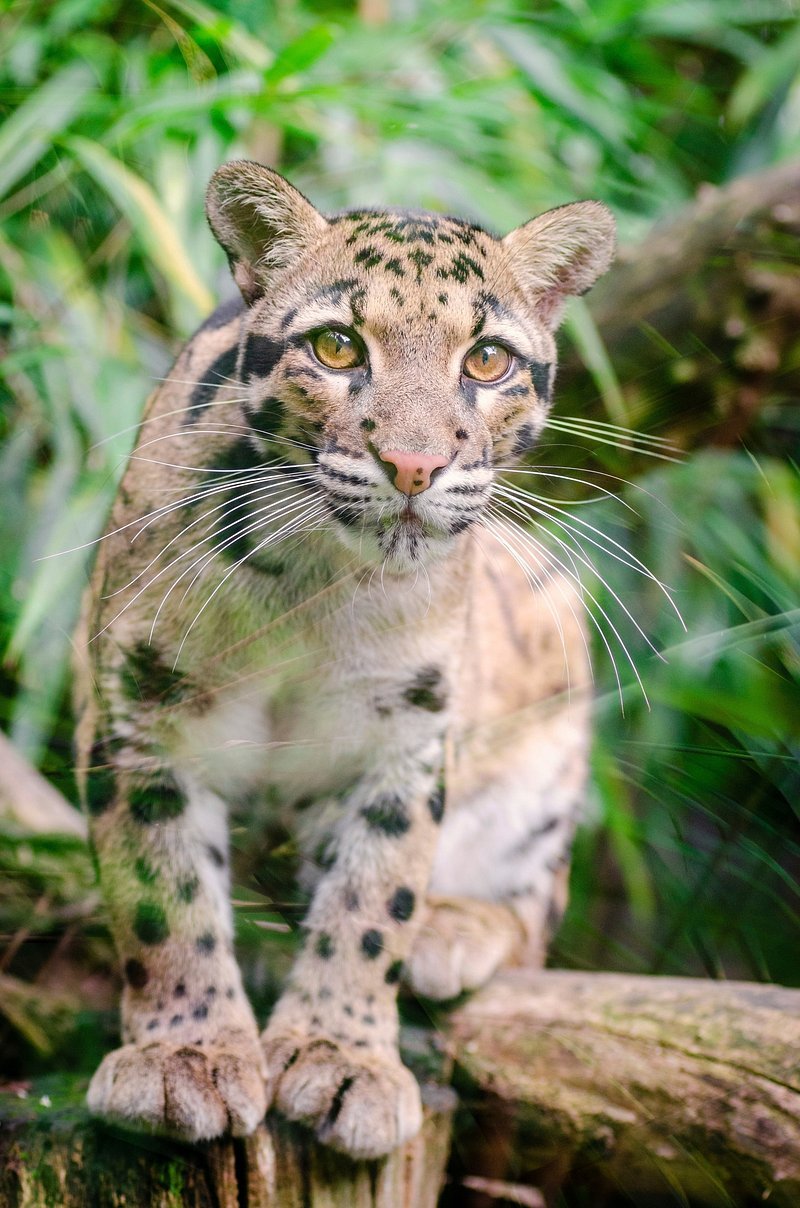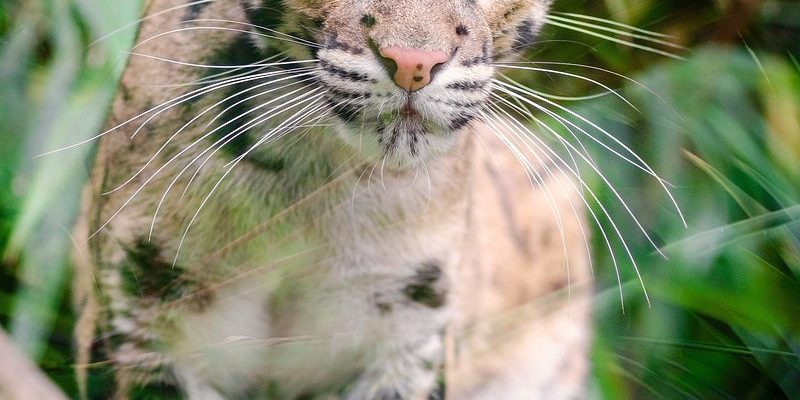
First, let’s get one thing straight: clouded leopards are not your ordinary house cats. They’re wild creatures that thrive in dense forests, and they can weigh up to 50 pounds. While they’re generally shy and prefer to avoid humans, it’s important to know how to react if you stumble upon one in the wild. Think of it as an unexpected meeting with a celebrity—you want to be respectful and calm, right?
In this article, we’ll cover everything you need to know if you encounter a clouded leopard. From understanding their behavior to safety tips, we want to ensure you feel informed and prepared. So grab your gear, and let’s dive into the world of these majestic cats.
Recognizing a Clouded Leopard
Before you can react appropriately, it’s essential to know what a clouded leopard looks like. These gorgeous animals have a unique appearance that sets them apart from other big cats. With their soft, cloud-like spots, they blend seamlessly into their surroundings.
Clouded leopards are medium-sized compared to lions and tigers, but they have long bodies and short legs. You’ll often see them perched on branches or prowling the forest floor. They have large, rounded heads with big eyes, giving them excellent night vision—this helps them hunt effectively during the twilight and nighttime hours.
If you spot one, take a moment to appreciate its beauty. However, keep your distance! Remember, these are still wild animals with instincts that can kick in at any moment.
Understanding Their Behavior
Now that you can recognize a clouded leopard, it helps to understand a bit about their behavior. Clouded leopards are generally solitary creatures, preferring to spend their time alone rather than in groups. This solitary nature can make them seem more mysterious, but it also means they’re not typically aggressive unless they feel threatened.
These cats are known for being excellent climbers, often taking to the trees to escape danger or stalk prey. They’re also quite stealthy, making it hard for humans to spot them in the wild. If you find yourself in an area where they live, you might hear their distinctive calls, a series of low growls or yowls that echo through the forest.
Ultimately, understanding their behavior can help you gauge whether they’re feeling calm or threatened. If a clouded leopard feels cornered, it might act defensively, so it’s crucial to keep that in mind during your encounter.
Staying Calm and Observing
Okay, let’s talk about what to do when you spot a clouded leopard. First things first: stay calm. Panicking will only worsen the situation. Take a deep breath and remind yourself that you’re in the presence of a wild animal that’s just as curious about you as you are about it.
Next, find a safe spot to observe from a distance. Hyperventilating or making sudden movements could alarm the leopard, causing it to react unpredictably. Instead, consider quietly stepping back to give them space. Clouded leopards are naturally curious, and if they feel secure, they might even continue with their activities, giving you a rare chance to observe them.
While watching, take mental notes of their behavior. Are they moving gracefully? Are they focused on something else? This observation can tell you a lot about their mood and intentions.
What Not to Do
Just as there are things you should do when encountering a clouded leopard, there are also critical actions to avoid. Here’s what you definitely shouldn’t do:
- Don’t approach: Getting too close can scare or provoke the leopard.
- Don’t make loud noises: Yelling or shouting can increase anxiety for both you and the leopard.
- Don’t run away: Running might trigger a chase response—stick to slow, deliberate movements.
- Don’t try to feed them: This can encourage them to associate humans with food, leading to dangerous situations down the line.
Imagine you’re at a party, and someone comes up too close, shouting. You’d feel uncomfortable, right? It’s the same with a clouded leopard. Treat them with respect and give them space.
Using Your Surroundings to Stay Safe
If you find yourself in a natural habitat known for clouded leopards, being aware of your surroundings is crucial. Look for potential escape routes, like trees or rocky outcrops, that can offer safety if the situation turns tense.
Make sure to keep an eye on the ground as well. If you’re on a hiking trail, you might find signs of wildlife—like paw prints or places where animals have scratched. These clues can help you understand that you’re in clouded leopard territory, so you can tread carefully.
If a leopard approaches and seems curious, try to remain on higher ground—this could help you maintain a safe distance. Being aware of your environment can also enhance your experience, giving you a deeper connection to nature and the wildlife around you.
When to Seek Help
In rare cases, you might encounter a clouded leopard that appears injured or overly aggressive. If this happens, it’s best to seek help instead of trying to handle the situation yourself. Contact local wildlife authorities who are trained to deal with wild animals. They can assess the situation and take appropriate action.
Even if you feel comfortable, it’s important to understand that clouded leopards can behave unpredictably, especially if they’re in pain or scared. Calling for expert assistance ensures both your safety and the well-being of the animal.
In addition, if you’re in a national park or protected area, there might be protocols in place for these kinds of encounters. Familiarize yourself with those guidelines before venturing out into the wilderness.
Concluding Thoughts on Clouded Leopards
Encountering a clouded leopard in the wild is an experience that can leave you in awe. These beautiful cats are a reminder of the wild’s magic and unpredictability. By knowing how to react, you can enjoy the moment while also staying safe.
Honoring their space and observing from a distance allows you to appreciate these incredible creatures without putting yourself or the leopard at risk. Remember: the key to a successful encounter is respect and awareness. The next time you find yourself in their territory, you’ll feel ready, informed, and excited for the adventure ahead!

